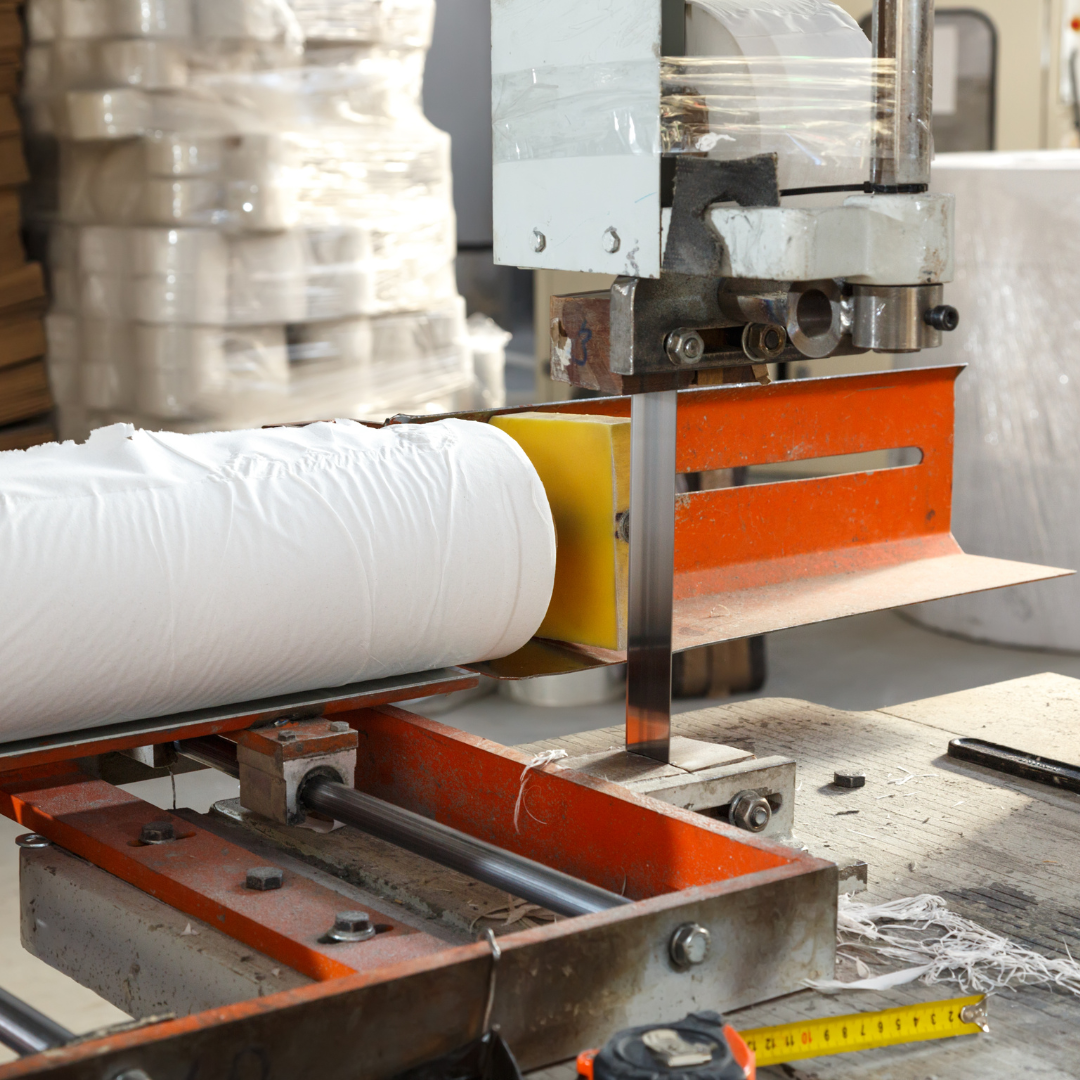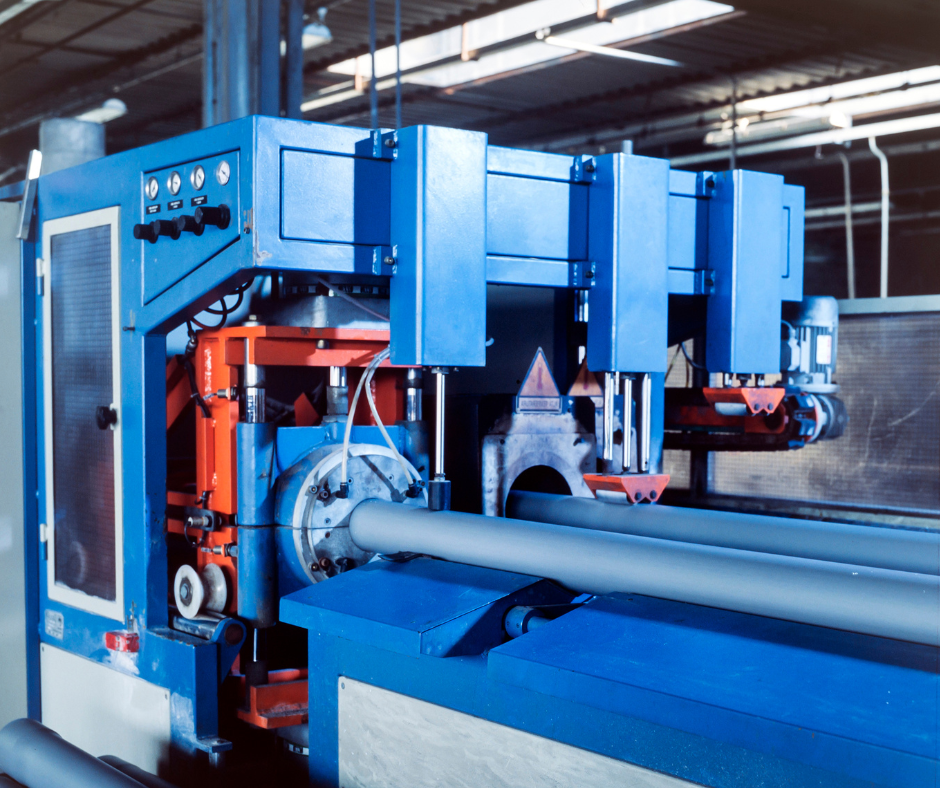In 2020, the global market for biodegradable paper products was valued at USD 693.8 million, with a projected growth rate of 5.5% between 2021 and 2028. Biodegradable papers can be made from a variety of natural and renewable materials, including bamboo, sugarcane bagasse, and recycled fibers. In 2019, the global production of bamboo paper was estimated to be 2.6 million tons. According to the Environmental Protection Agency, paper and paperboard products accounted for 26% of total landfill waste in the United States in 2018.
The adoption of biodegradable papers is a key component of the transition towards a more circular economy, where resources are kept in use for as long as possible and waste is minimized. According to the Ellen MacArthur Foundation, transitioning to a circular economy could generate up to USD 4.5 trillion in economic benefits globally by 2030.
Sustainable manufacturing is a critical component of modern industrial practices and requires the use of renewable resources, clean technologies, and eco-friendly materials. In the paper industry, the use of biodegradable papers has the potential to revolutionize sustainable manufacturing by reducing the environmental impact of paper production and promoting the use of renewable resources. Biodegradable papers are papers that can be broken down into natural compounds by microorganisms, typically within a few weeks or months. These papers are typically made from renewable plant fibers such as bamboo, hemp, and sugarcane, and can be produced using sustainable manufacturing practices.
This article will discuss the potential benefits of biodegradable papers for sustainable manufacturing, the challenges associated with their production and use, and the future prospects for their adoption.
- Potential Benefits of Biodegradable Papers for Sustainable Manufacturing
- Reducing Waste
- Reducing Carbon Footprint
- Promoting Sustainable Forestry
- Protecting Biodiversity
- Supporting Local Communities
- Meeting Consumer Demand
- Challenges Associated with the Production and Use of Biodegradable Papers
- Cost
- Performance
- Availability
- Consumer Awareness
- Future Prospects for the Adoption of Biodegradable Papers
- Promote Sustainable Forestry Practices
- Encourage Research and Development
- Increase Consumer Awareness
- Provide Incentives
- How Deskera Can Assist You?
- Key Takeaways
- Related Articles
Potential Benefits of Biodegradable Papers for Sustainable Manufacturing
Let us look at some of the benefits below:
Reducing Waste
One of the key benefits of using biodegradable papers in sustainable manufacturing is their ability to reduce waste. Conventional paper products can contribute significantly to waste generation and pollution, as they are often not recyclable or biodegradable. In contrast, biodegradable papers are designed to break down naturally, reducing the amount of waste that ends up in landfills and the environment.
Biodegradable papers can be used in a wide range of applications, including packaging, printing, and tissue products. For example, biodegradable paper bags can be used as an alternative to plastic bags, which can take hundreds of years to degrade in landfills and pose a significant threat to marine ecosystems. Biodegradable tissue products can also reduce waste by breaking down naturally in the environment, reducing the need for landfill disposal.
Biodegradable papers can also be recycled, reducing waste and promoting the circular economy. The recycling of biodegradable papers can help to reduce the carbon footprint of paper production, as it reduces the need for virgin pulp production and reduces the amount of waste sent to landfills.
Reducing waste through the use of biodegradable papers can have significant environmental benefits. Landfills are a major source of greenhouse gas emissions, as organic waste in landfills generates methane, a potent greenhouse gas that contributes to climate change. By reducing the amount of waste sent to landfills, biodegradable papers can help to reduce greenhouse gas emissions and mitigate the impacts of climate change.
Furthermore, reducing waste can also have economic benefits. Landfill disposal is a significant cost for many businesses, and reducing waste can help to reduce these costs. By using biodegradable papers, businesses can reduce their waste generation and disposal costs, promoting more efficient and sustainable manufacturing practices.
The use of biodegradable papers can significantly reduce waste generation and promote more sustainable manufacturing practices. Biodegradable papers can be used in various applications, from packaging to tissue products, and can be recycled to promote the circular economy. By reducing waste, biodegradable papers can have significant environmental and economic benefits, enabling more efficient and sustainable manufacturing practices.
Reducing Carbon Footprint
In addition to reducing waste, using biodegradable papers can also help reduce the carbon footprint of paper manufacturing. The production of conventional paper products typically requires significant amounts of energy and resources, contributing to greenhouse gas emissions and other environmental impacts.
One of the key advantages of biodegradable papers is that they can be made from a wide range of renewable materials, including wood pulp, bamboo, and agricultural waste products. These materials are typically more sustainable than conventional ones, as they require less energy and resources and are often more readily available.
Furthermore, the production of biodegradable papers can be designed to minimize environmental impacts. For example, using renewable energy sources, such as solar or wind power, can significantly reduce the carbon footprint of paper manufacturing. Additionally, the use of closed-loop manufacturing processes, where waste materials are reused and recycled, can further reduce the environmental impacts of paper production.
The use of biodegradable papers can also reduce the carbon footprint of paper products throughout their lifecycle. For example, biodegradable packaging can be designed to minimize the amount of material required and maximize transport and storage efficiency, reducing emissions associated with transportation and logistics.
Moreover, the biodegradation of these materials after use can also reduce carbon emissions. When biodegradable papers are disposed of, they break down into natural substances, such as carbon dioxide and water, which are less harmful to the environment than conventional materials that may take hundreds of years to degrade.
Using biodegradable papers can significantly reduce the carbon footprint of paper manufacturing and promote more sustainable practices. Biodegradable papers can reduce greenhouse gas emissions and other environmental impacts by using renewable materials and minimizing environmental impacts throughout the production process. Additionally, the biodegradation of these materials after use can further reduce emissions and promote a more sustainable and circular economy.
Promoting Sustainable Forestry
Another key benefit of using biodegradable papers in sustainable manufacturing is the potential to promote sustainable forestry practices. The production of conventional paper products can contribute to deforestation, habitat loss, and other environmental impacts associated with the harvesting of wood fiber. In contrast, using biodegradable papers can promote sustainable forestry practices that protect natural ecosystems and promote long-term forest health.
Biodegradable papers can promote sustainable forestry practices by using materials certified by independent forest management organizations, such as the Forest Stewardship Council (FSC) or the Programme for the Endorsement of Forest Certification (PEFC). These organizations provide certification for forests that are managed in an environmentally responsible manner, considering factors such as biodiversity conservation, soil conservation, and community involvement.
Certified materials can help ensure that the wood fibers used in paper production are sourced from sustainably managed forests, reducing the environmental impacts associated with conventional wood harvesting practices. Additionally, using certified materials can help to promote best practices in forest management, such as responsible harvesting and reforestation, promoting long-term forest health and biodiversity.
Furthermore, the production of biodegradable papers can also promote the use of non-wood fiber sources, such as agricultural waste products and recycled materials. These materials can reduce the demand for virgin wood fiber, promoting sustainable forestry practices and reducing the environmental impacts associated with conventional wood harvesting.
Promoting sustainable forestry practices through using biodegradable papers can have significant environmental and social benefits. Sustainable forestry practices can help protect natural ecosystems, promote biodiversity, and provide economic opportunities for local communities. Additionally, promoting sustainable forestry practices can help mitigate climate change's impacts, as forests can act as carbon sinks, storing carbon and reducing greenhouse gas emissions.
Using biodegradable papers can promote sustainable forestry practices and reduce the environmental impacts associated with conventional paper production. Using certified materials and non-wood fiber sources, biodegradable papers can reduce the demand for virgin wood fiber and promote responsible forest management practices. Promoting sustainable forestry practices can have significant environmental and social benefits, contributing to a more sustainable and equitable future.
Protecting Biodiversity
Another important aspect of using biodegradable papers for sustainable manufacturing is the potential to protect biodiversity. The production of conventional paper products can negatively impact biodiversity through deforestation and habitat destruction. However, the use of biodegradable papers can promote sustainable practices that protect natural ecosystems and promote biodiversity conservation.
Biodegradable papers can protect biodiversity by using non-wood fiber sources, such as agricultural waste products or recycled materials. This reduces the demand for virgin wood fiber, which can help to protect natural ecosystems from the negative impacts of conventional forestry practices. Additionally, the use of non-wood fiber sources can promote biodiversity conservation by reducing the need for monoculture plantations, which are often associated with habitat loss and decreased biodiversity.
Moreover, the use of certified materials, such as those certified by the FSC or PEFC, can also help to protect biodiversity. Forest certification schemes typically require forest managers to implement measures to protect biodiversity, such as maintaining habitat corridors and protecting endangered species. By using certified materials, paper manufacturers can support these efforts and promote biodiversity conservation.
In addition to responsibly sourcing materials, paper manufacturers can promote biodiversity conservation through their manufacturing processes. For example, closed-loop manufacturing processes, which reuse and recycle waste materials, can reduce the amount of waste generated by paper production, thereby reducing the negative impacts on natural ecosystems. Additionally, the use of renewable energy sources, such as solar or wind power, can further reduce the environmental impacts of paper manufacturing and promote biodiversity conservation.
Furthermore, the biodegradation of biodegradable papers after use can also contribute to protecting biodiversity. When biodegradable papers break down into natural substances, they do not leave behind harmful residues that can harm natural ecosystems. This can be particularly important for products that are used in sensitive environments, such as agricultural areas or natural habitats.
The use of biodegradable papers can promote biodiversity conservation and protect natural ecosystems. Paper manufacturers can reduce the negative impacts of paper production on biodiversity by using non-wood fiber sources, certified materials, closed-loop manufacturing processes, and renewable energy sources. Additionally, the biodegradation of biodegradable papers after use can further protect natural ecosystems. By promoting sustainable practices and protecting biodiversity, the use of biodegradable papers can contribute to a more sustainable and equitable future.
Supporting Local Communities
Another important aspect of using biodegradable papers for sustainable manufacturing is the potential to support local communities. Paper product production can significantly impact local communities, particularly in areas where natural resources are being extracted for use in paper production. However, the use of biodegradable papers can promote sustainable practices that support local communities and promote social equity.
One way that biodegradable papers can support local communities is by sourcing materials from local producers. Paper manufacturers can support local economies and create jobs for community members by purchasing materials from local suppliers. Additionally, sourcing materials locally can reduce the environmental impacts of transportation and promote more sustainable supply chains.
Moreover, paper manufacturers can also support local communities through their manufacturing processes. For example, implementing closed-loop manufacturing processes can create opportunities for local businesses to recycle waste materials and create new products, thereby creating jobs and promoting local economic development. Additionally, investing in renewable energy sources, such as solar or wind power, can create jobs in the renewable energy sector and promote local economic growth.
Furthermore, using biodegradable papers can also benefit local communities by reducing the negative impacts of paper production on public health. Conventional paper production can release pollutants into the air and water, which can negatively impact local residents' health. By using biodegradable papers, paper manufacturers can reduce the environmental impacts of their production processes and promote healthier living environments for local communities.
In addition to supporting local communities through their production processes, paper manufacturers can also contribute to community development through their corporate social responsibility (CSR) initiatives. For example, investing in education and training programs can help build local communities' capacity and promote social equity. Additionally, supporting local environmental initiatives, such as reforestation projects or conservation efforts, can promote sustainable practices and benefit both the environment and local communities.
The use of biodegradable papers can support local communities and promote social equity. By sourcing materials locally, implementing closed-loop manufacturing processes, investing in renewable energy sources, and supporting CSR initiatives, paper manufacturers can create jobs, promote economic development, and contribute to public health and well-being. Additionally, by supporting local environmental initiatives, paper manufacturers can promote sustainable practices and contribute to a more equitable and sustainable future.
Meeting Consumer Demand
Consumer demand is an important factor to consider when it comes to sustainable paper manufacturing, as it can significantly impact the adoption of biodegradable papers. Fortunately, there are several strategies that paper manufacturers can employ to meet consumer demand for more sustainable paper products.
One way to meet consumer demand for sustainable paper products is to conduct market research to understand consumer preferences and behaviors better. This can include surveying consumers on their preferences for eco-friendly products, as well as analyzing sales data to identify which products are most popular among environmentally conscious consumers. By understanding consumer preferences, paper manufacturers can develop products that better meet the needs of their target market.
Another strategy is to provide clear and transparent information about the environmental impacts of paper products. This can include providing information about the sourcing of materials, the manufacturing process, and the disposal or recycling of the product. By providing this information, consumers can make more informed decisions about the products they choose to purchase and be more confident that they are buying are environmentally responsible.
Moreover, paper manufacturers can also promote the use of biodegradable papers through marketing and advertising campaigns. This can include promoting the benefits of using biodegradable papers, such as reduced environmental impacts and improved sustainability. By raising awareness about the benefits of biodegradable papers, paper manufacturers can help to shift consumer demand towards more sustainable paper products.
Additionally, paper manufacturers can work with retailers and other stakeholders to promote the use of biodegradable papers in their supply chains. For example, working with retailers to develop packaging that is made from biodegradable papers can help to reduce the environmental impacts of packaging materials and promote more sustainable practices in the retail industry.
Meeting consumer demand for sustainable paper products is an important aspect of promoting the adoption of biodegradable papers in the paper manufacturing industry. By conducting market research, providing transparent information, promoting the benefits of biodegradable papers, and working with retailers and other stakeholders, paper manufacturers can help to shift consumer demand towards more sustainable paper products and contribute to a more sustainable future.
Challenges Associated with the Production and Use of Biodegradable Papers
While biodegradable papers offer significant potential for sustainable manufacturing, there are also some challenges associated with their production and use. Some of these challenges include:
Cost
Biodegradable papers may be more expensive to produce than conventional papers. The production of biodegradable papers often involves the use of specialized equipment and materials, which can increase production costs. The higher cost of biodegradable papers may limit their adoption by businesses and consumers.
Performance
The performance of biodegradable papers may be inferior to that of conventional papers. Biodegradable papers may have lower strength and durability, which can limit their use in applications that require high performance. However, advancements in biodegradable paper technology have led to the development of papers with improved performance, which can overcome these limitations.
Availability
Biodegradable papers may not be as widely available as conventional papers. While the demand for eco-friendly products is growing, the production of biodegradable papers still needs to grow. This can limit their availability and restrict their adoption by businesses and consumers.
Consumer Awareness
Consumer awareness of biodegradable papers and their benefits may be limited. Many consumers may not be aware of the environmental impact of conventional paper products or the benefits of using biodegradable papers. This can limit demand for biodegradable papers and restrict their adoption by businesses.
Future Prospects for the Adoption of Biodegradable Papers
Despite the challenges associated with producing and using biodegradable papers, there are significant opportunities for their adoption in sustainable manufacturing. Advancements in biodegradable paper technology have led to the development of papers with improved performance, which can overcome the limitations associated with their use. The growing demand for eco-friendly products and the increasing awareness of environmental sustainability are also driving the adoption of biodegradable papers.
To promote the adoption of biodegradable papers, businesses and policymakers can take several steps:
Promote Sustainable Forestry Practices
Policymakers can promote sustainable forestry practices that promote the regeneration and maintenance of forest ecosystems. This can support the production of biodegradable papers using renewable resources and sustainable manufacturing practices.
Encourage Research and Development
Businesses can invest in research and development to improve the performance and reduce the cost of biodegradable papers. This can promote the adoption of biodegradable papers by businesses and consumers.
Increase Consumer Awareness
Businesses can increase consumer awareness of the environmental impact of conventional paper products and the benefits of using biodegradable papers. This can promote the adoption of biodegradable papers by consumers and increase demand for eco-friendly products.
Provide Incentives
Policymakers can provide incentives for the production and use of biodegradable papers, such as tax incentives and subsidies. This can promote the adoption of biodegradable papers by businesses and support sustainable manufacturing practices.
How Deskera Can Assist You?
Deskera's integrated financial planning tools allow investors to better plan their investments and track their progress. It can help investors make decisions faster and more accurately.
Deskera Books enables you to manage your accounts and finances more effectively. Maintain sound accounting practices by automating accounting operations such as billing, invoicing, and payment processing.

Deskera CRM is a strong solution that manages your sales and assists you in closing agreements quickly. It not only allows you to do critical duties such as lead generation via email, but it also provides you with a comprehensive view of your sales funnel.
Deskera People is a simple tool for taking control of your human resource management functions. The technology not only speeds up payroll processing but also allows you to manage all other activities such as overtime, benefits, bonuses, training programs, and much more. This is your chance to grow your business, increase earnings, and improve the efficiency of the entire production process.
Key Takeaways
- Biodegradable papers offer a more sustainable alternative to traditional paper products, as they can decompose in natural environments and do not contribute to environmental pollution.
- Biodegradable papers can be produced using a range of natural and renewable materials, such as bamboo, sugarcane bagasse, and recycled fibers.
- The use of biodegradable papers can help to reduce waste, lower carbon footprint, support sustainable forestry, protect biodiversity, and support local communities.
- Paper manufacturers can employ several strategies to promote the adoption of biodegradable papers, including conducting market research, providing transparent information, promoting the benefits of biodegradable papers, and working with retailers and other stakeholders to promote sustainable practices.
- Meeting consumer demand for sustainable paper products is an important factor in promoting the adoption of biodegradable papers, and paper manufacturers can help to shift consumer demand towards more sustainable paper products by understanding consumer preferences, providing clear information, and promoting the benefits of biodegradable papers.
Biodegradable papers offer significant potential for sustainable manufacturing by reducing waste, reducing the carbon footprint of paper production, promoting sustainable forestry practices, protecting biodiversity, supporting local communities, and meeting consumer demand for eco-friendly products. While there are some challenges associated with the production and use of biodegradable papers, advancements in biodegradable paper technology and the growing demand for eco-friendly products are driving their adoption. To promote the adoption of biodegradable papers, businesses and policymakers can take several steps, including promoting sustainable forestry practices, investing in research and development, increasing consumer awareness, and providing incentives. The adoption of biodegradable papers can promote sustainable manufacturing practices and support the transition to a more sustainable economy.
Related Articles











